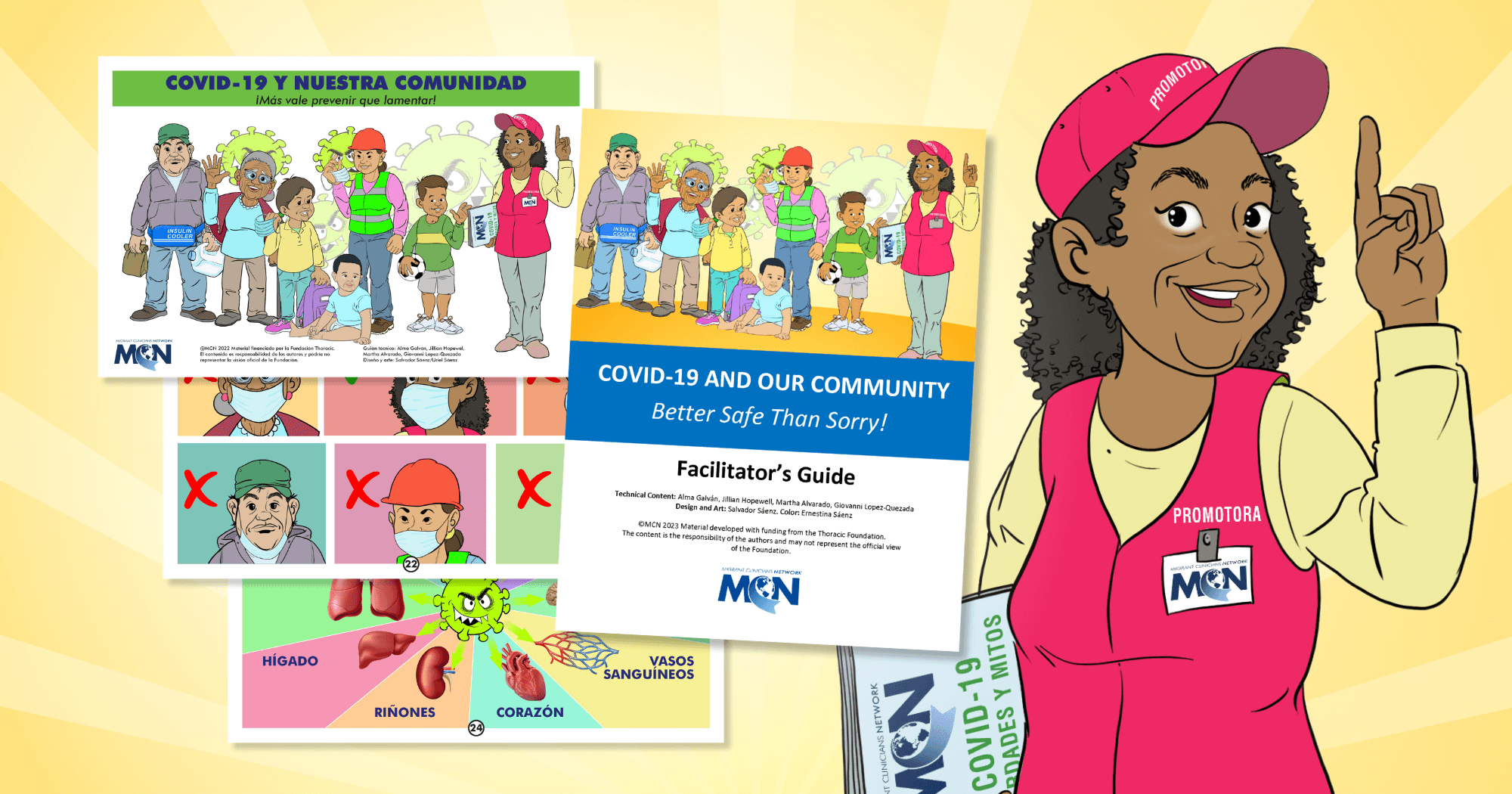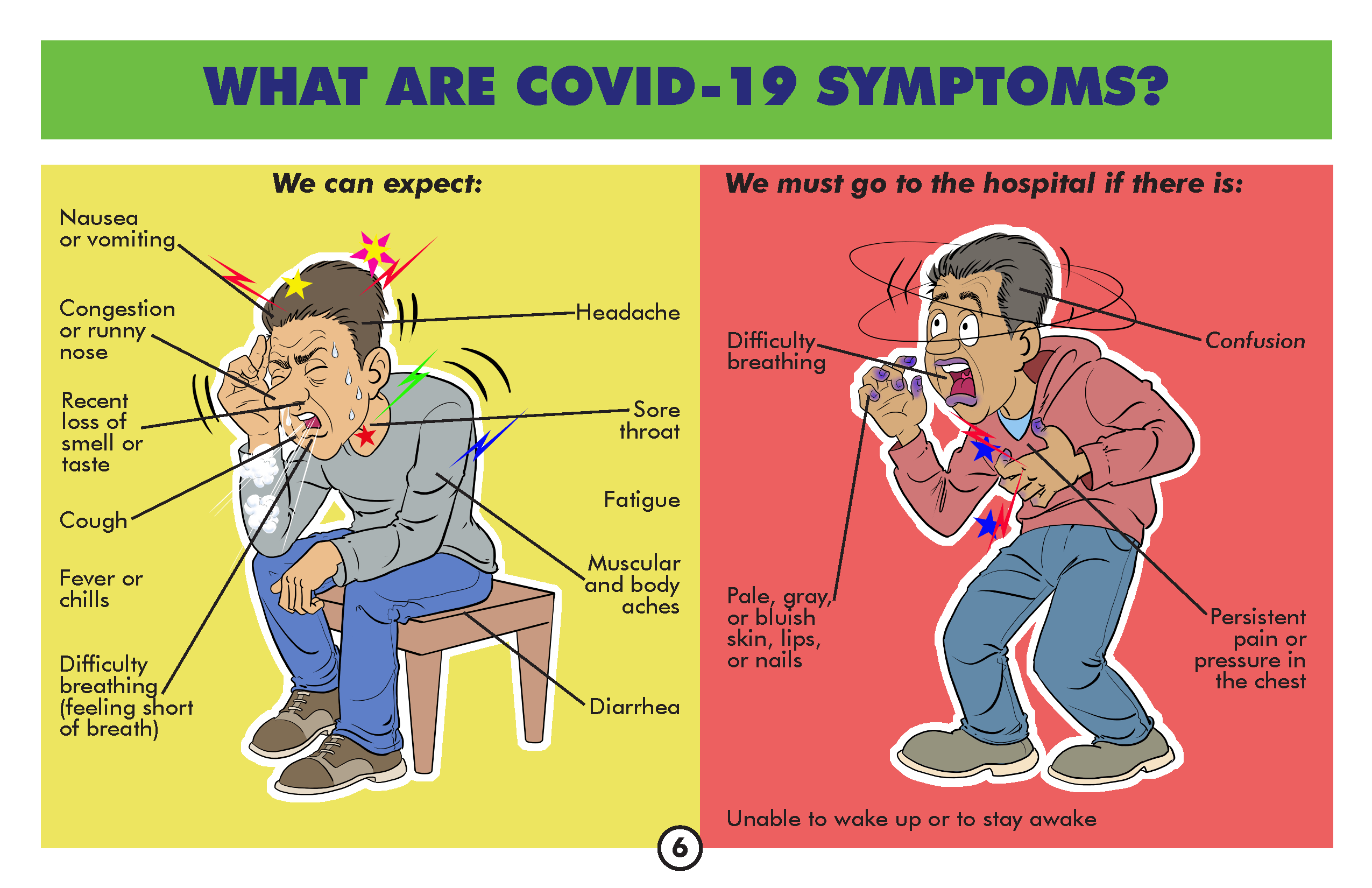New Flip Chart & Guide to Protect Your Community from Infectious Diseases like COVID-19

[Editor’s Note: In this edited version of an article from the Summer 2023 issue of Streamline, we introduce the newly published flip chart and accompanying guide, to help community health workers (CHWs) and other health advocates teach others in their community about infectious diseases like COVID. Streamline is MCN’s quarterly clinical publication. Subscribe to receive a physical copy of Streamline in your mailbox. Read the complete article, with more on the role of CHWs in the health team, in the summer issue. Download the rotafolio and accompanying guide in English and Spanish.]
Infectious diseases, like COVID-19, can kill. But communities with access to good health information can protect themselves. Community health workers (CHWs) are a key component in providing evidence-based and up-to-date health content to communities, including around COVID-19. To support their efforts, Migrant Clinicians Network (MCN) has developed a new low-literacy, comic-based rotafolio, or flip chart, and an accompanying CHW guide to ensure effective program delivery, with funding from the Thoracic Foundation. Both the flip chart and guide are available in English and Spanish. The rotafolio translates basic health information on the spread of infectious diseases, vaccinations, and preventive public health actions. The guide expands on evidence-based information for CHWs and provides resources and websites so the CHW can easily look for updated information, which is particularly needed for fast-moving public health crises like COVID-19.


“Migrant Clinicians Network believes in the role of the CHW as an extension of the health team,” said Alma Galván, MHC, Director of Community Engagement and Worker Training for MCN. Galván, supported by MCN’s education and communications teams, worked with longtime MCN collaborator Salvador Saenz, illustrator, to build the rotafolio, which consists of 26 pages of full-page color comic images with minimal and simple language. One colorful page illustrates the mRNA vaccines as a trumpet declaring the arrival of the virus, so white blood cells can arrive and defeat the virus, which may prompt the CHW to provide some basics on how the vaccines work. Another page clarifies that the mRNA vaccine does not contain products from blood, fetuses, eggs, or pigs, with images of each, allowing the CHW time to engage with participants on misinformation they may have heard. The final page in the guide includes a seated woman in distress, rubbing her forehead, while images of past-due bills, checks, and news on COVID fill the space around her. Here, the CHW can address the many ways that an infectious disease can affect someone – not just physically, but emotionally and mentally as well. The rotafolio also addresses long COVID, with one page dedicated to the many ways that COVID can affect the body after its acute phase.
“Information might continue to change – but the pictures are long lasting in the sense that they can cover a lot of ground without a lot of text,” Galván added. CHWs can edit the information they share as understanding of long COVID, for example, changes.
The accompanying guide helps the CHW lead conversations on the content of the rotafolio, answering basic questions that are applicable to all infectious diseases, like, “What are infectious diseases?”, “What are vaccines?”, and “What is the immune system?”, as well as COVID-specific questions like, “What is COVID-19?”, and “How is COVID transmitted?”, before covering in-depth questions around misinformation, bivalent vaccines, ventilation, and proper respirator use. Motivational interviewing is a key component. “We need to be cognizant of who is in front of us. We need to listen more about what their issues are, what their hesitancies are, and then ask if they want to hear information from us,” Galván said. Providing time for the participant to articulate hesitancies grows trust and ensures that the participant is engaged. If they don’t want to hear the information but the CHW provides it anyway, the division between the participant and the CHW may grow, Galván added. The guide is built to enable CHWs to incorporate motivational interviewing into their approach, be it with an individual or group, to build rapport with the community, specifically to acknowledge their concerns and fears, before introducing new information.
The rotafolio and accompanying guide are now available on the MCN website.
Visit www.migrantclinician.org/es/resource/covid-19-y-nuestra-comunidad-rotafolio.html to download and print.
- Log in to post comments